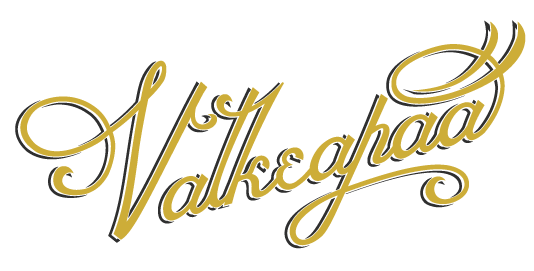GUITARS
All musicians have their own tone and vocabulary, small fragments or deeper studies picked up along the road of practicing.
The struggle as a musician is to transmit what you hear, through your body and out from your fingertips. The goal is to make your instrument an extension of yourself. To build an instrument is a unique opportunity for me to create a tool that facilitates that process and brings the most out of the musician, and at the same time give that instrument a voice of its own.
On every project I put my whole soul into making that specific guitar as good as I possibly can.
I make all the woodwork by hand with absolute love for the material. I want to embrace the wood that has been cut down and bring as worthy life to it as I possibly can.
When building a guitar there are many factors that affect the voice, and that is what I find is the beauty of it. For me it is a lifelong journey to investigate, refine and get true control of this fine art form.
MODELS
G5
When designing this guitar I wanted to create something timeless, flirt with the aesthetics from the 30s and at the same time give it a modern feeling. Small little details in the construction and design has developed and found Its place since I built the first one.
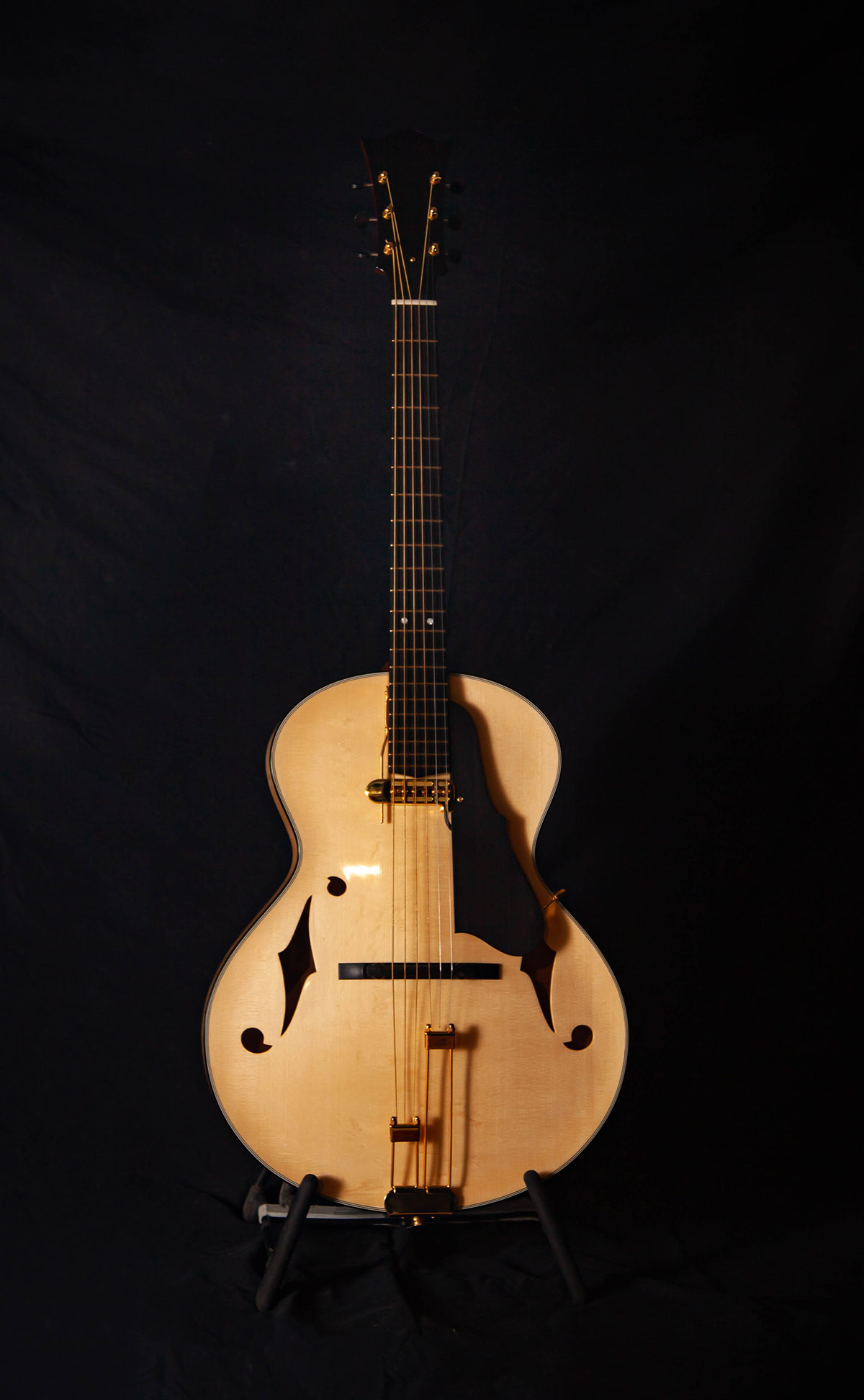
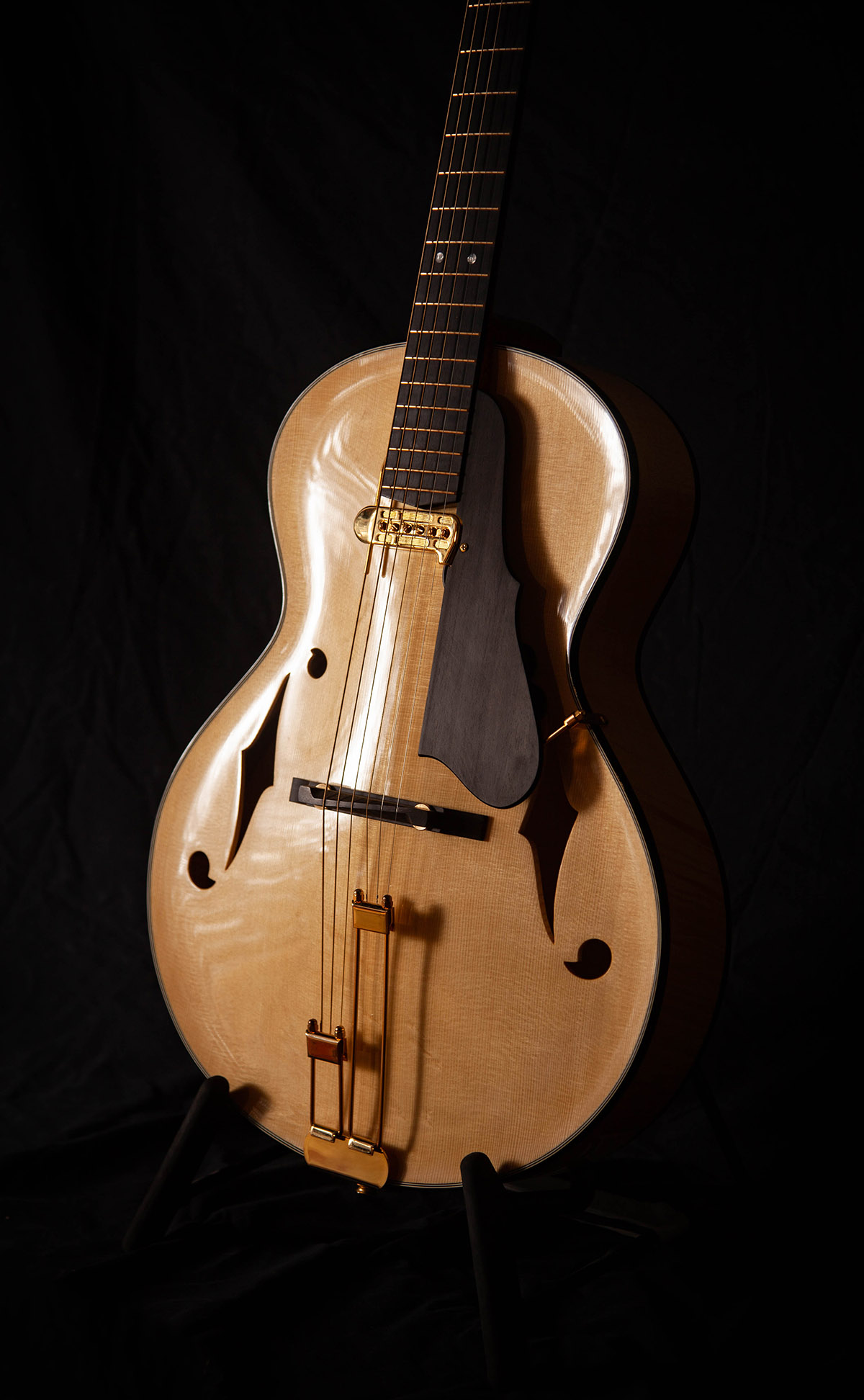
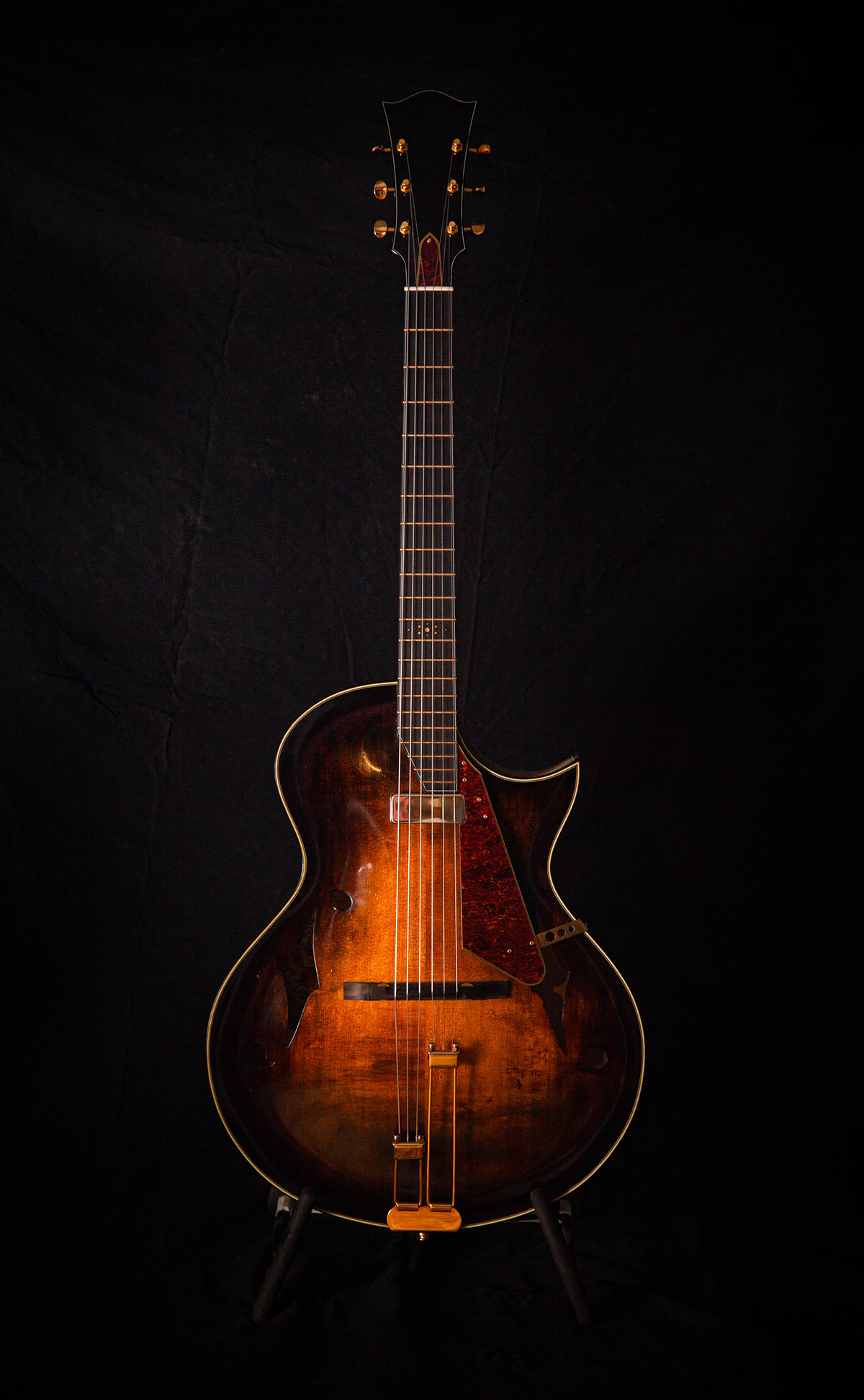

Hardware & Materials
Tailpiece: Frequensator or custom
Tuners: Schaller Grandtune or custom
Truss rod: Double action
Frets: Evo
Pickguard support: Pickguard bracket
Sides: Maple or Mahogany
Back: Maple or Mahogany
Top: Spruce
Kerfling: Mahogany
Neck & heel block: Mahogany
Neck: Maple or Mahogany
Headstock veneers: Ebony or Indian rosewood
Bridge & fretboard:
Ebony or Indian rosewood
Fretboard inlays:
Perloid or mop
Heel cap & truss rod cover: Ebony, Indian rosewood or Celluloid
Measures
Scale length: 25”
Width nut: 44mm
Width 12th fret: 54mm
Thickness 1st fret: 22mm
Thickness 9th fret: 24mm
Width lower bout: 402mm
Waist: 226.5mm
Body: 510mm
Fretboard radius: 12”
Head angle: 15°
Customizations
It’s possible to get this model with a venetian or florentine cutaway.
You can have any type of floating pickup you want installed, or an all acoustic guitar.
Parallel or x bracing.
G35
When I designed this model I was aiming to create a jazz guitar with the reach of an electric guitar. Although I got inspired by the es335 or the es150D, this model is based on my model G5 but has a double cutaway.
This model is possible to get with many customizations, all depending if you want an more acoustic archtop or an electric guitar more durable to feedback.
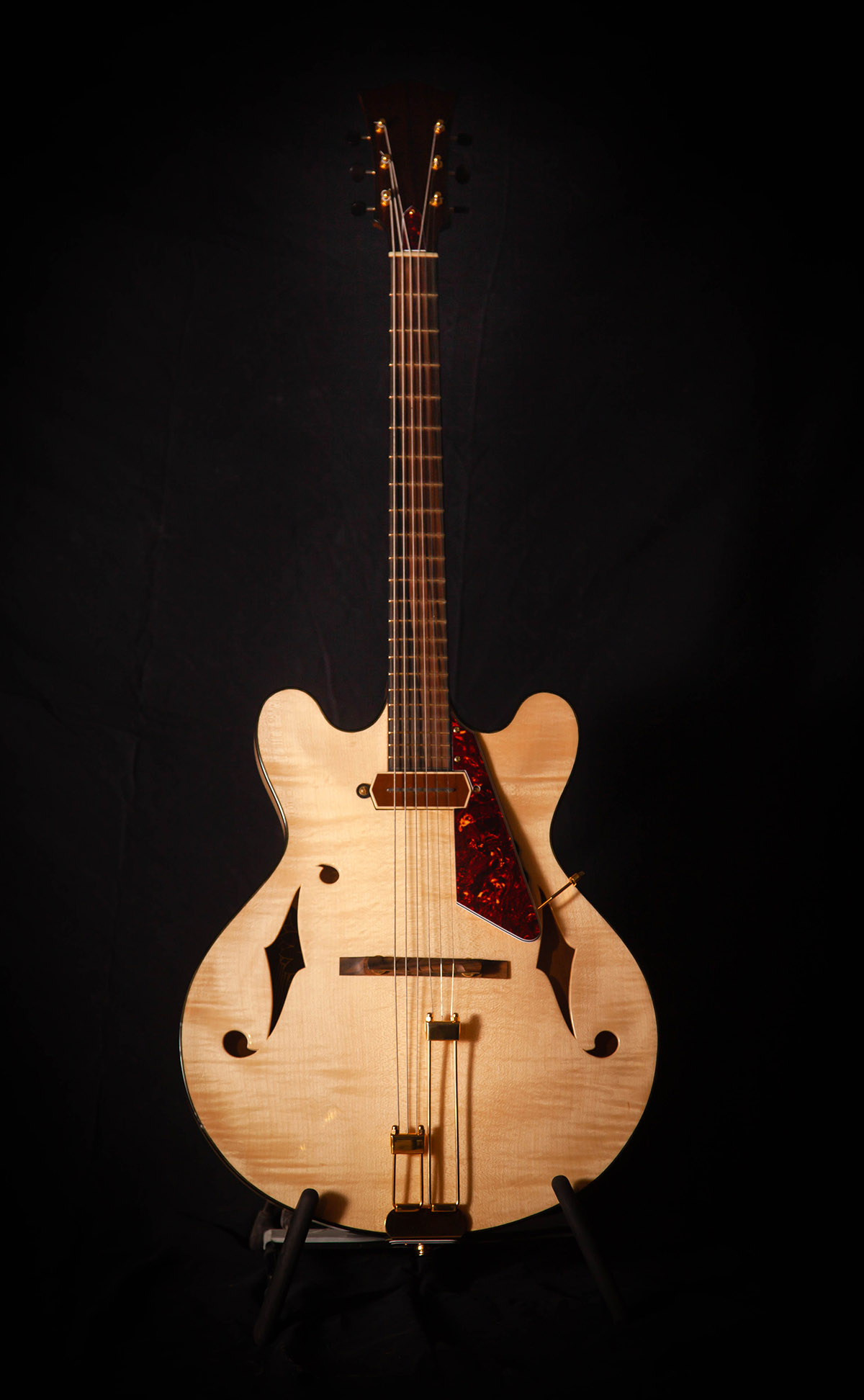
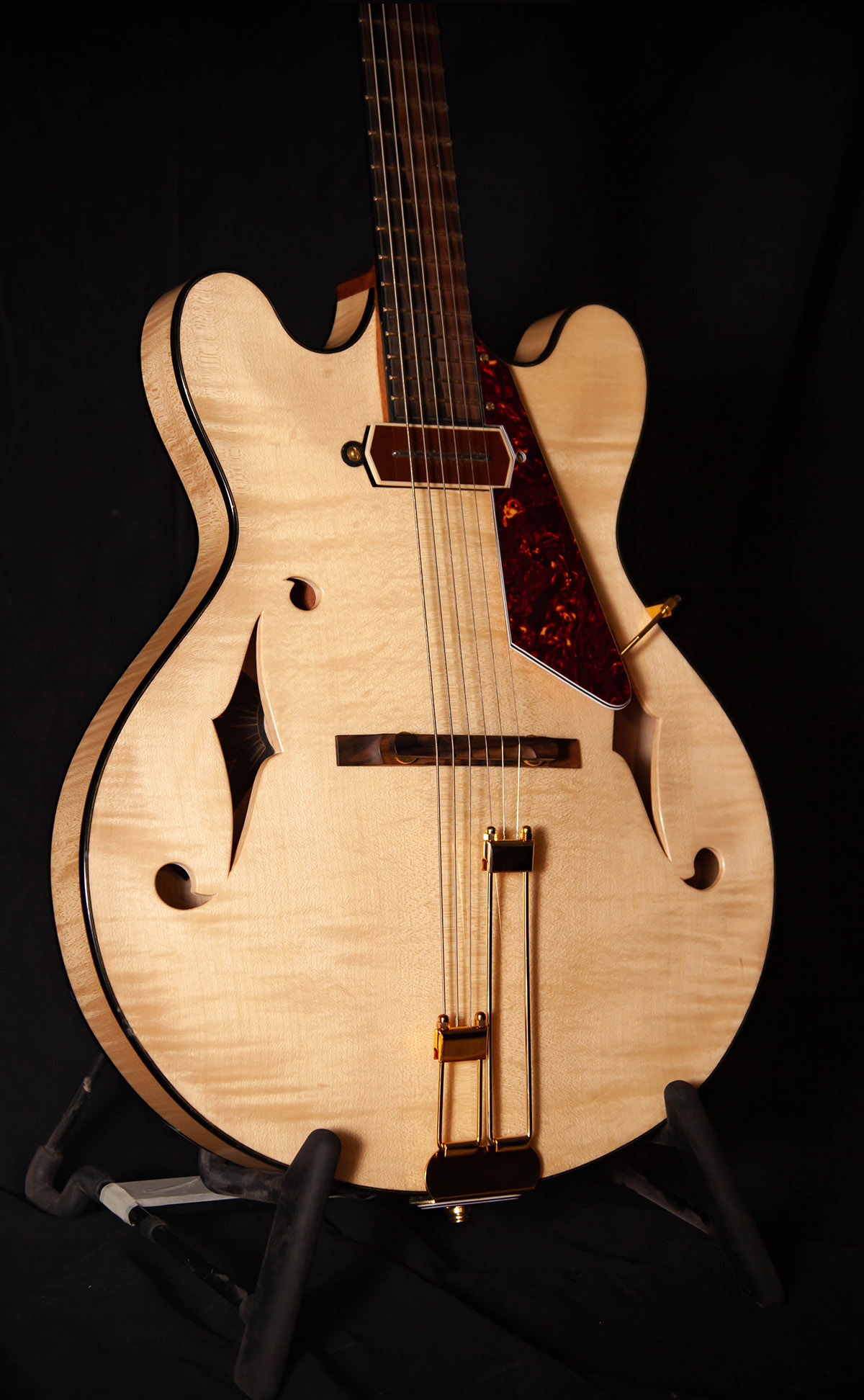

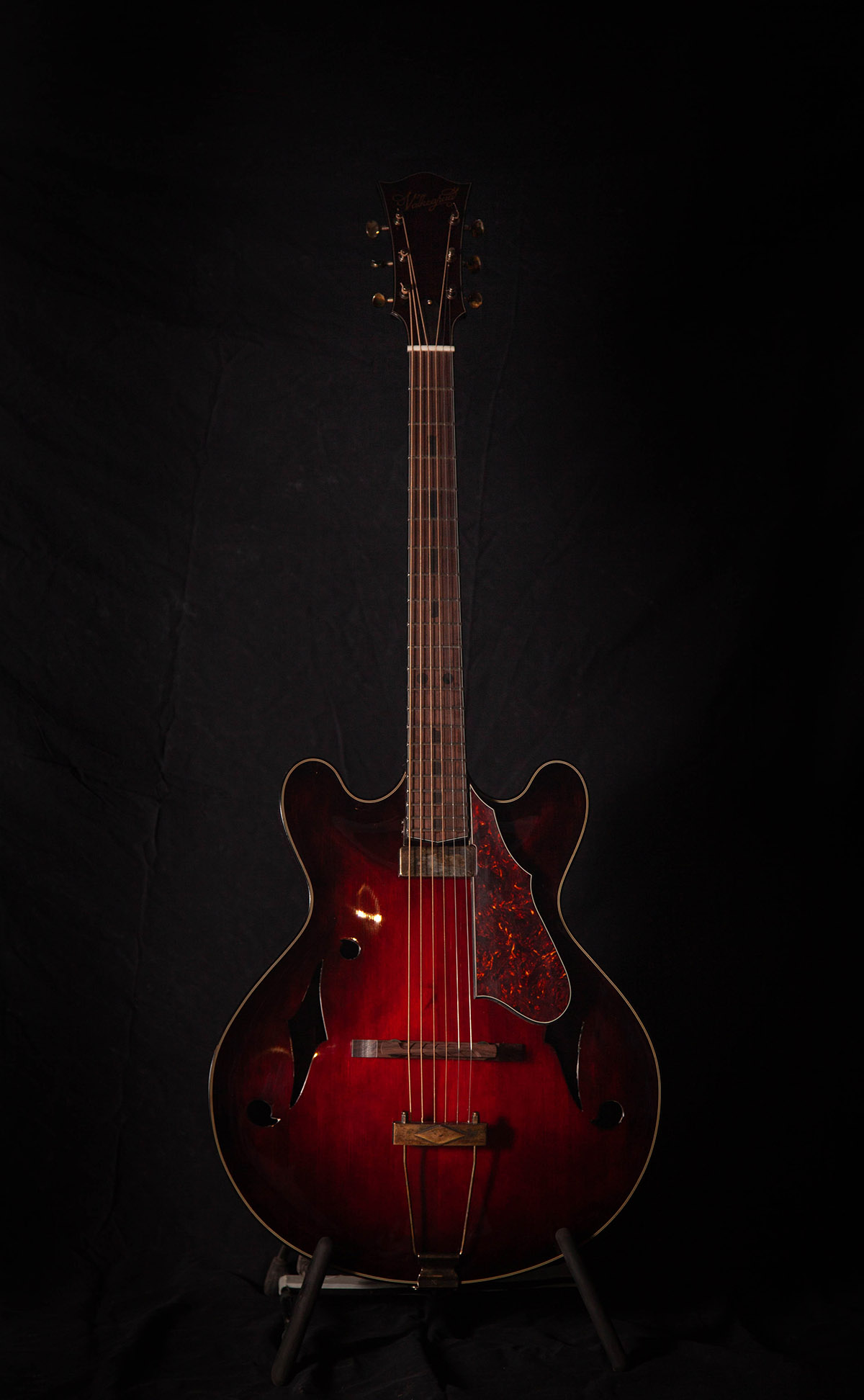
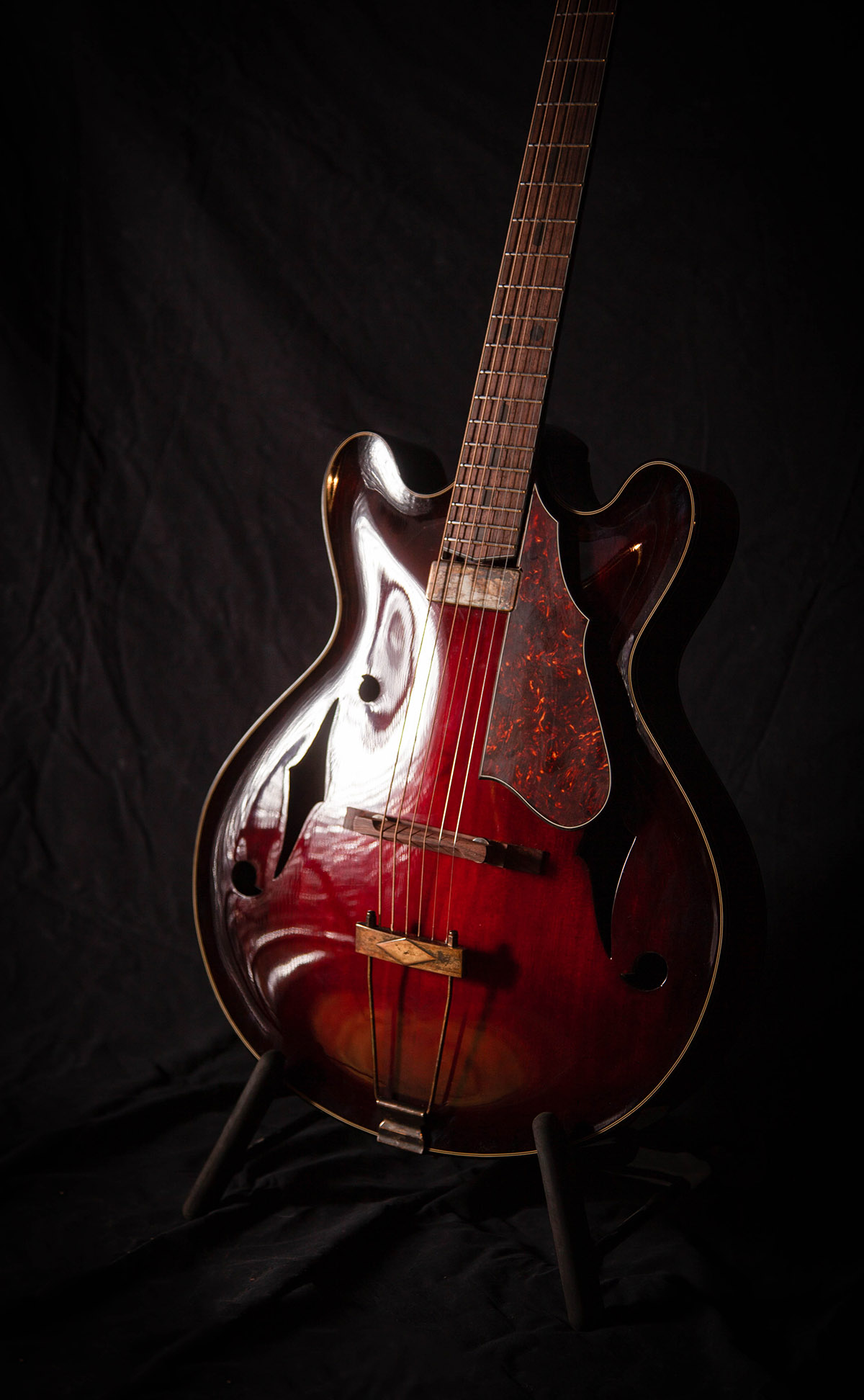

Hardware & Materials
Sides: Maple or Mahogany
Back: Maple or Mahogany
Top: Spruce, Maple or Mahogany
Kerfling: Mahogany
Neck and heel block: Mahogany
Neck: Maple or Mahogany
Headstock veneers: Ebony or Indian rosewood
Bridge: Ebony, Indian rosewood or tune-o-matic
Fretboard: Ebony or Indian rosewood
Fretboard inlays: Perloid or mop
Heel Cap and truss rod cover: Ebony, Indian rosewood or Celluloid
Tailpiece: Frequensator or custom
Tuners: Schaller Grandtune
Truss rod: Double action
Frets: Evo
Pickguard support: Pickguard bracket
Measures
Scale length: 25”
Width nut: 44mm
Width 12th fret: 54mm
Thickness 1st fret: 22mm
Thickness 9th fret: 24mm
Width lower bout: 402mm
Waist: 226.5mm
Body: 510mm
Fretboard radius: 12”
Head angle: 15°
Customizations
It’s possible to get this model with a 16 or 17 fret neck joint.
Any type of pickup you want
with or without a center block,
16 or 17 fret neck joint
Parallel or x bracing.
You can have any type of pickup installed.
Laminated sides
Glued or a bolton neck
Tune O matic or wooden bridge
El5
This is my homage to the legendary Gibson L5 introduced in 1923..
A little further into my studies I wanted to expand my knowledge and explore more in the world of archtops. My philosophy has always been to go back to the roots. If you have the fundamentals, it will be possible to evolve in a different path than the mainstream.
It all started out as a curiosity but has grown into an obsession, I have spent countless hours searching for information about this particular model. (pictures coming)
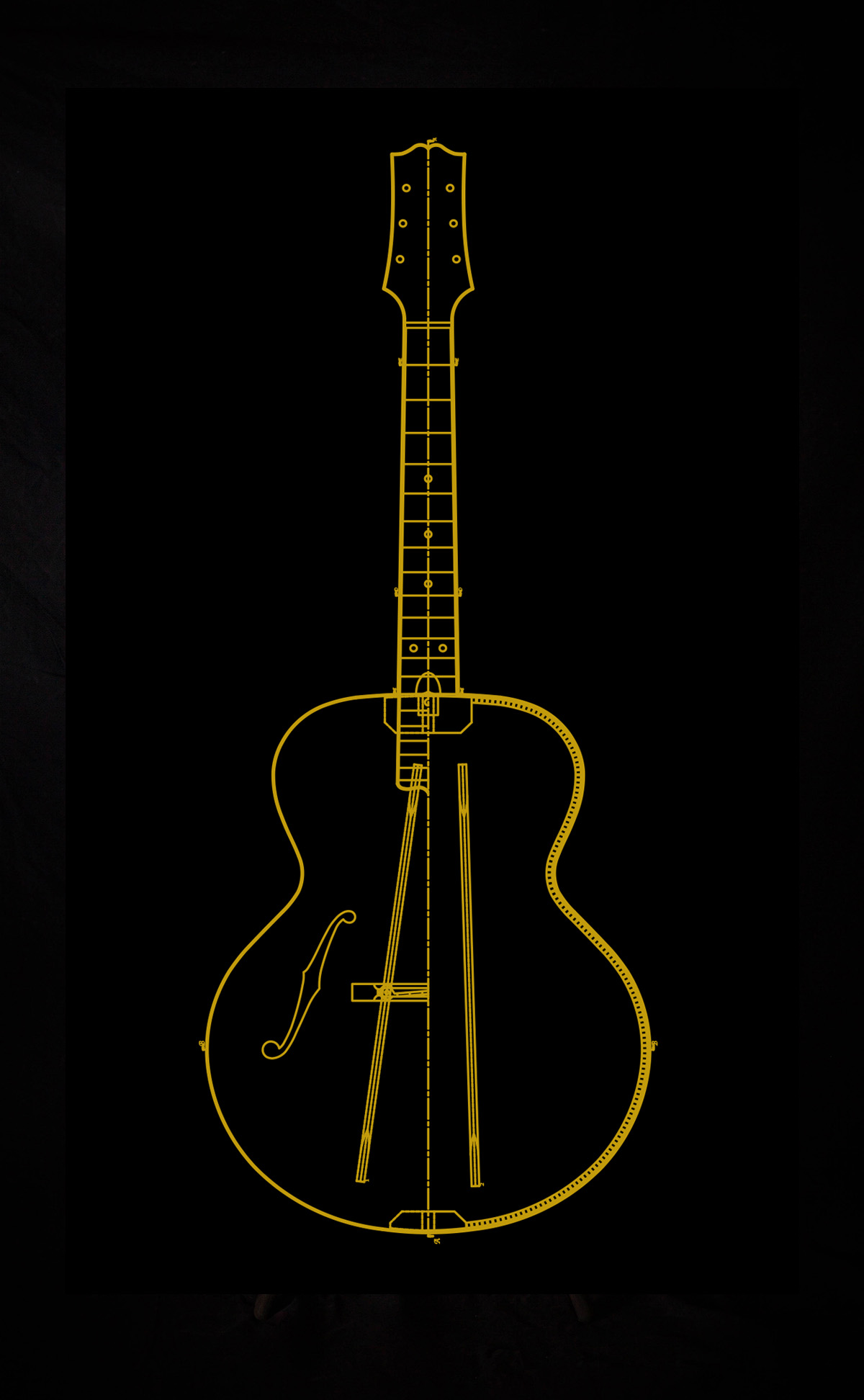
Hardware & Materials
Tailpiece: Wraparound Trapeze L5 style
Tuners:
Truss rod: Double action
Frets: Evo
Pickguard support: Pickguard bracket
Sides: Maple or mahogany
Back: Maple or Mahogany
Top: Spruce
Kerfling: Mahogany
Neck and heel block: Mahogany
Neck: Maple or Mahogany
Headstock veneers: Ebony or Indian rosewood
Bridge and fretboard: Ebony or Indian rosewood
Fretboard inlays: Perloid or mop
Heel cap and truss rod cover: Ebony, Indian rosewood or Celluloid
Measures
Scale length: 24 3/4”
Width nut: 44mm
Width 12th fret: 54mm
Thickness 1st fret: 22mm
Thickness 9th fret: 24mm
Width lower bout: 408mm
Width upper bout: 285.5mm
Waist: 232mm
Body: 512.5mm
Fretboard radius: 12”
Head angle: 17°
Customizations
Parallel or x bracing.
Es15o
This model is based on the timeless ES-150 introduced in 1936 with some modifications for a lighter and stronger construction.
Few guitarists have impacted the use of a guitar as much as Charlie Christian.
Since I’m a sucker for bebop this is a model I just have to have as an option. (pictures coming)

Hardware & Materials
Tailpiece: Wraparound Trapeze ES150 style
Tuners:
Truss rod: Double action
Frets: Evo
Pickguard support: Pickguard bracket
Sides: Maple or mahogany
Back: Maple or Mahogany
Top: Spruce
Kerfling: Mahogany
Neck and heel block: Mahogany
Neck: Maple or Mahogany
Headstock veneers: Ebony or Indian rosewood
Bridge and fretboard: Ebony or Indian rosewood
Fretboard inlays: Perloid or mop
Heel cap and truss rod cover: Ebony, Indian rosewood or Celluloid
Measures
Scale length: 24 3/4”
Width nut: 44mm
Width 12th fret: 54mm
Thickness 1st fret: 22mm
Thickness 9th fret: 24mm
Width lower bout: 413mm
Width upper bout: 288mm
Waist: 235mm
Body: 514.5mm
Fretboard radius: 12”
Head angle: 17°
Customizations
Flat or an arched back
My builds features
- Reversed Kerfed Linings to make the rims more stable
- Extra rim reinforcements
- Laminated necks for more stability
- Extra veneer on the back of the headstock to prevent it from cracking
- Evo frets for longer last
Material
The already dried wood I let acclimatize to the workshop’s humidity conditions for at least 6 months, where I keep it around 38% RH.
For mahogany necks and bodies, I personally go to my local lumber yards to hand pick out planks or boards that have as little runouts and are as flat or quarter sawn as possible.
I only order spruce and maple from the best suppliers in Europe, preferably as close to Sweden as possible. I spend around 200 hours on a project and want to start off with material that has as much potential as possible.
I never compromise with the structural integrity of my guitars, for me it is important to build something that is going to last as long as possible. Working with these delicate dimensions requires wood that has been exactly and correctly cut and glued as tight as possible.
Finish
Hand rubbed sunburst
Usually I stain my sunbursts directly into the wood, that will embrace the woodgrain more and give the finish a deeper look.
Shellac
For the finish l preferably french polish my instruments. Shellac will keep the lac as thin as possible and therefore you’ll let the instrument react and vibrate more.
I really love the beautiful and organic feeling to it, even if it gives me gray hair sometimes.
I have experience with other finishes, so If requested I can of course use one of these.
Hardware
When it comes to hardware I have my own preference for what I think will perform well and look good on my handbuilt guitars. If you want something specific, there is of course no problem discussing alternatives.
